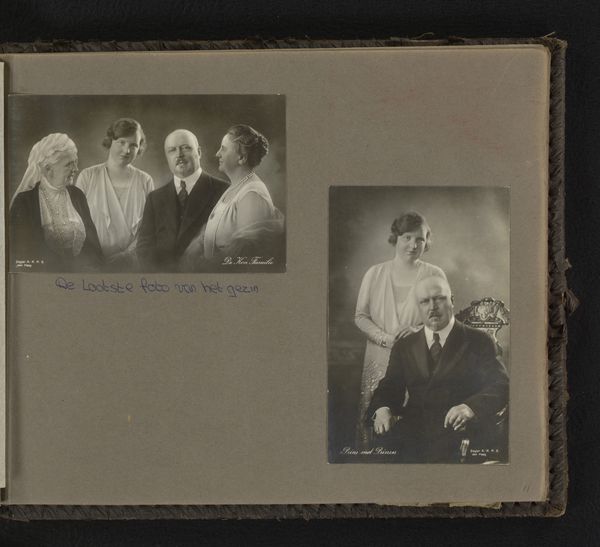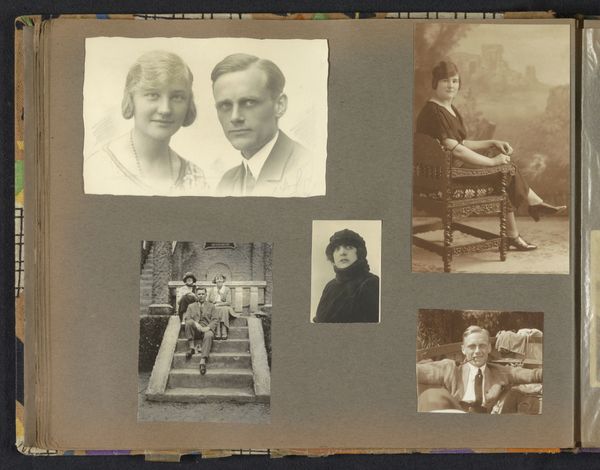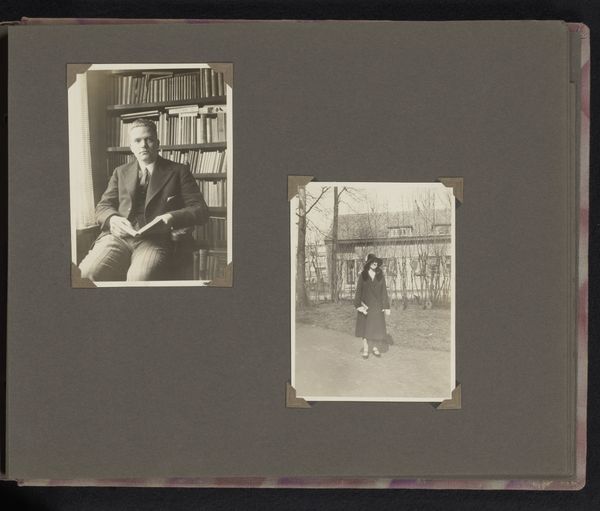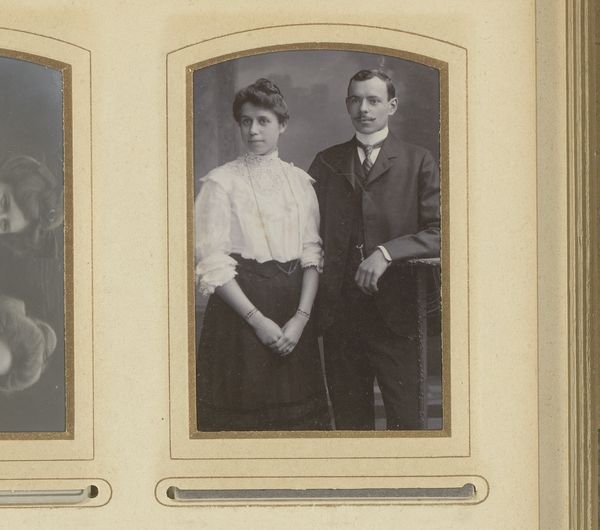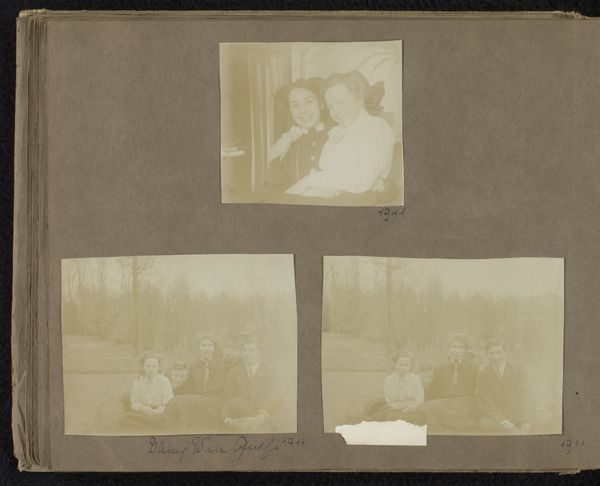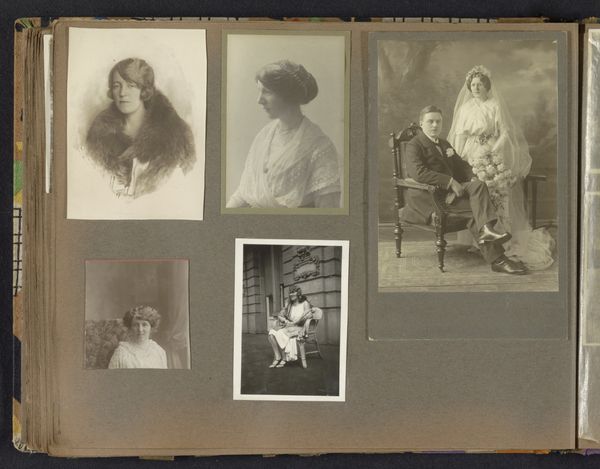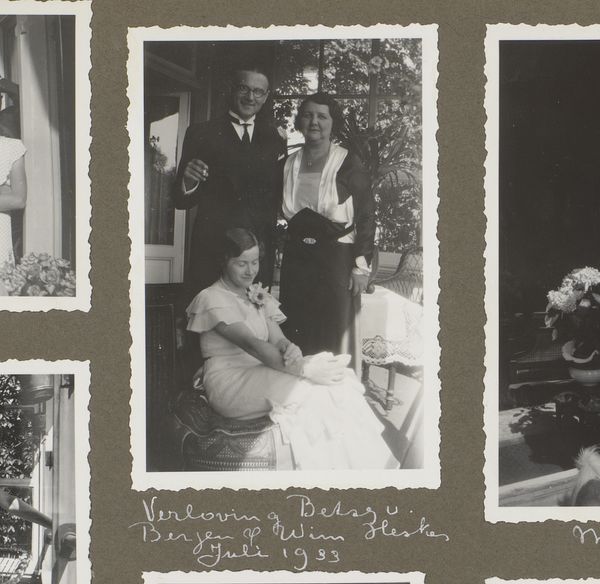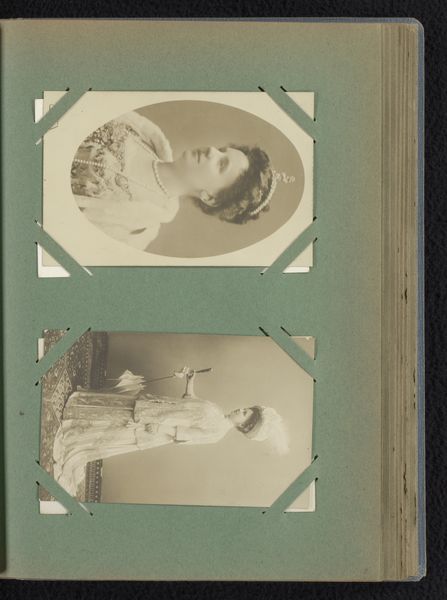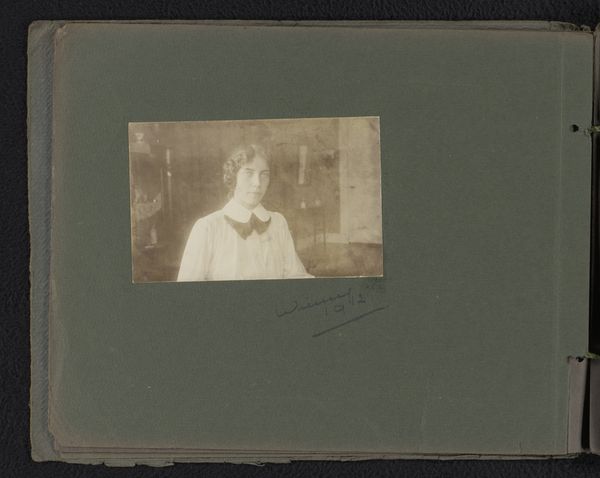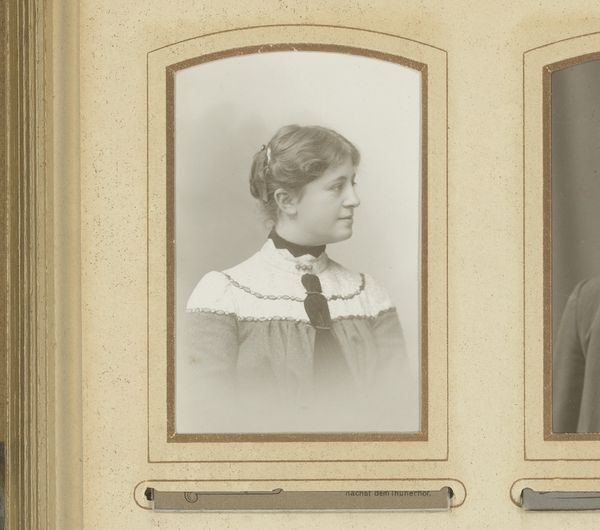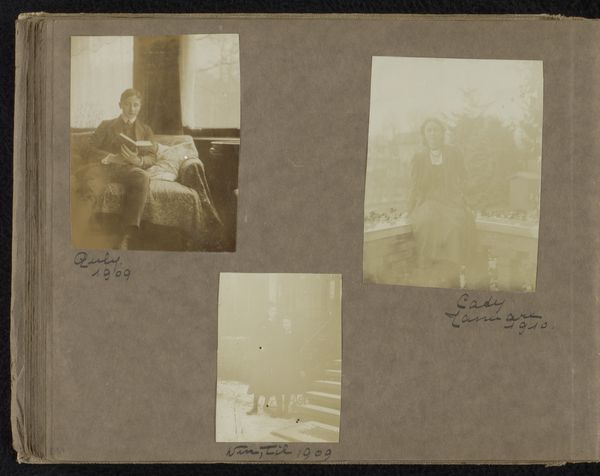
photography
#
portrait
#
self-portrait
#
pictorialism
#
photography
#
group-portraits
#
mixed media
Dimensions: height 235 mm, width 292 mm
Copyright: Rijks Museum: Open Domain
Editor: We’re looking at “Portretten,” or “Portraits,” a photographic work by Henri Berssenbrugge from around 1900 to 1925. It looks like two separate images mounted side-by-side in an album, showing a couple and then a single woman in profile. I'm struck by how these seem to capture such distinct moods in a bygone era. What can you tell us about this pairing? Curator: This pairing presents an interesting historical snapshot, quite literally. Berssenbrugge’s use of pictorialism—evident in the soft focus and evocative compositions—reflects a specific moment when photography was striving to be recognized as high art, not just documentation. Do you see how that impacts our understanding of its social function? Editor: Absolutely. The deliberate artistry feels like a claim for photography's place in cultural expression. It isn't just taking a picture, it's making art. What kind of role did photography play for everyday people? Curator: For the middle classes of the early 20th century, photographic portraiture offered a way to participate in visual culture and represent their status. But let’s think critically—who had access to this form of representation? Who was being excluded from these images, and how does that inform our understanding of the work? Editor: That’s a powerful point. Seeing these images as a cultural record makes me think about who’s *not* shown as much as who *is*. How the societal gaze influences what we see even in personal photographs. Curator: Exactly. By analyzing the power dynamics inherent in portraiture, we begin to understand photography’s complex relationship with identity, representation, and social hierarchies during this period. These portraits, seemingly simple, are potent documents of a particular cultural moment. Editor: This really changes how I look at these portraits. I appreciate the nuance you brought to the surface. Curator: And I value your observations. These details offer great insights into our past.
Comments
No comments
Be the first to comment and join the conversation on the ultimate creative platform.
